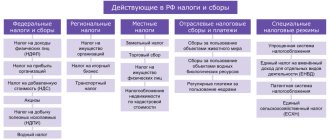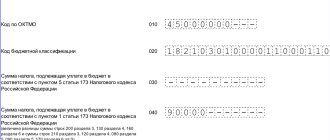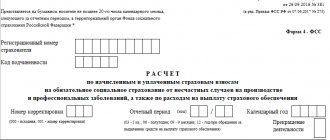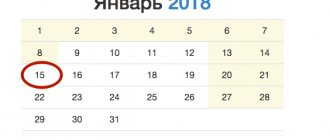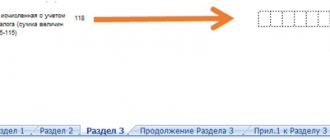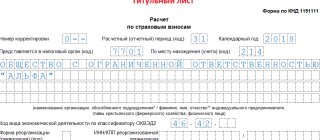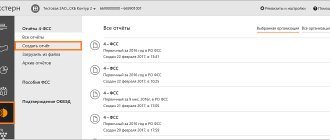- By the 20th day of the month following the reporting period.
\r\n\r\n
On profit, that is, on the difference between income and expenses.
\r\n\r\n
Income is revenue from the main activity (income from sales), as well as amounts received from other activities. For example, from leasing property, interest on bank deposits, etc. (non-operating income). When taxing profits, all income is taken into account without VAT and excise taxes.
\r\n\r\n
Expenses are justified and documented expenses of the enterprise. They are divided into costs associated with production and sales (employee wages, purchase price of raw materials, depreciation of fixed assets, etc.) and non-operating costs (negative exchange rate differences, court and arbitration fees, etc.). In addition, there is a closed list of expenses that cannot be taken into account when taxing profits. These are, in particular, accrued dividends, contributions to the authorized capital, loan repayments, etc.
\r\n\r\n
During tax audits, most problems arise precisely because of expenses: inspectors declare that expenses are not economically justified, primary documents are drawn up incorrectly, etc., etc. Therefore, accountants, as a rule, pay increased attention to documents confirming expenses.
\r\n\r\n
\r\n\r\n
There are two ways to recognize income and expenses: the accrual method and the cash method.
\r\n\r\n
During the year, the accountant must calculate advance payments for income tax. There are two ways to calculate advance payments.
\r\n\r\n
The first method is established for all organizations by default and provides that the reporting periods are the first quarter, half a year and nine months. Advance payments are made at the end of each reporting period. The payment amount based on the results of the first quarter is equal to the tax on profits received in the first quarter. The advance payment at the end of the half-year is equal to the tax on the profit received for the half-year, minus the advance payment for the first quarter. The amount of payment based on the results of nine months is equal to the tax on profit for nine months minus advance payments for the first quarter and half of the year.
\r\n\r\n
Plus, monthly advance payments are made during each reporting period. At the end of the reporting period, the accountant withdraws the advance payment based on the results of this period (we have given the calculation rules above), and then compares it with the amount of monthly payments made within this period. If the total monthly payments are less than the final advance payment, the company must pay the difference. If there is an overpayment, the accountant will take it into account in future periods.
\r\n\r\n
Monthly advance payments are calculated according to the following rules. In the first quarter, that is, January, February and March, the accountant calculates the same monthly advance payments as in October, November and December of the previous year. In the second quarter, the accountant takes tax on the profit actually received in the first quarter, and divides this figure by three. The result is the total of the monthly advance payments for April, May and June. In the third quarter, the accountant takes the tax from the actual profit for the six months, subtracts the advance payment of the first quarter, and divides the resulting figure by three. The amount of monthly advance payments for July, August and September comes out. In the fourth quarter, the accountant takes tax from the profit actually received for nine months, subtracts advance payments for six months, and divides the resulting value by three. These are advance payments for October, November and December.
\r\n\r\n
The second way is based on actual profit. The company can adopt this method voluntarily. To do this, you need to notify the tax office no later than December 31 that during the next year the company will switch to calculating monthly advance payments based on the actual profit received. With this method, the reporting periods are one month, two months, three months, and so on until the end of the calendar year. The advance payment for January is equal to the tax on profits actually received in January. The advance payment for January-February is equal to the tax on profits actually received in January and February minus the advance payment for January. The advance payment for January-March is equal to the tax on profits actually received in January-March minus advance payments for January and February. And so on until December.
\r\n\r\n
An organization that has previously chosen the second method of calculating advance payments (that is, based on actual profits) has the right to refuse it and return to the first method from the beginning of next year. To do this, you need to submit a corresponding application to the Federal Tax Service no later than December 31 of the current year. If you return to the first method, the advance payment for January-March will be equal to the difference between the advance payment for nine months and the advance payment for six months of the previous year.
\r\n\r\n
Companies whose sales revenue excluding VAT during the four previous quarters did not exceed an average of 15 million rubles per quarter must accrue only quarterly advance payments. This rule, regardless of the amount of revenue, also applies to budgetary, non-profit and some other organizations.
\r\n\r\n
Newly created organizations accrue not monthly, but quarterly advance payments until a full quarter has passed from the date of their state registration. Then the accountant must look at what the sales revenue is (excluding VAT). If it does not exceed 5 million rubles per month or 15 million rubles per quarter, the company can continue to accrue only quarterly advance payments. If the limit is exceeded, the company switches to monthly advance payments from the next month.
\r\n\r\n
If the reporting periods are a quarter, half a year and nine months, then advance payments based on the results of the reporting periods are made no later than April 28, July 28 and October 28, respectively. The monthly advance payment for January should be transferred no later than January 28, for February - no later than February 28, and so on until December inclusive.
\r\n\r\n
If the company makes advance payments based on actual profits, then the advance payment for January is made no later than February 28, for January-February - no later than March 28, and so on, until January 28 of the next year.
\r\n\r\n
Regardless of the chosen method of calculating advance payments, at the end of the calendar year, the accountant displays the total amount of income tax for the past year. Then he compares it with the amount of advance payments accrued at the end of the reporting periods. If the total amount of advance payments is less than the final tax amount, the company pays the difference to the budget. If there is an overpayment, the accountant will take it into account in the following periods. The total amount of income tax must be paid no later than March 28 of the following year.
\r\n\r\n
Companies whose activities are completely transferred to one or more special tax regimes (simplified system or payment of a single agricultural tax) may not report income tax.
- 4-FSS in paper form for 2021. Who rents:
All employers. - Declaration on UTII for the fourth quarter of 2021. Who rents:
Organizations and individual entrepreneurs who were UTII payers in the fourth quarter of 2021. - Single simplified declaration for 2021. Who submits:
Organizations (IPs) that in 2021 had no movements in their current account and no objects of taxation for the taxes indicated in the declaration. - Log of invoices for the fourth quarter of 2020. Who submits:
Intermediaries who do not have to submit a declaration (i.e. are not payers, tax agents, did not issue invoices to their customers with the allocated tax amount), if they received or issued invoices in the interests of another person during the tax period . - Declaration on the volume of production, turnover and (or) use of ethyl alcohol, alcoholic and alcohol-containing products for the fourth quarter of 2021. Who rents it out:
Organizations (IP) engaged in the production, circulation (including retail sale) of ethyl alcohol, alcoholic or alcohol-containing products. - Information on the number of objects of aquatic biological resources subject to removal from their habitat as permitted bycatch for December 2021. Who rents it out:
Organizations (IP) that use objects of aquatic biological resources with a permit for the extraction (catch) of aquatic biological resources. - Water tax declaration for the fourth quarter of 2020. Who rents it out:
Organizations (IP) that carry out special and (or) special water use. - Gambling tax return for December 2020. Who rents it out:
Organizations (IP) that conduct business in the gambling business.
Tax calendar by reporting dates for the 3rd quarter
Before you issue tax payments for the 3rd quarter, you must fill out reports for the 3rd quarter. The types of taxes requiring reporting based on the results of the 3rd quarter depend on:
- on the applied taxation system;
- the duration of the tax period established by the Tax Code of the Russian Federation (based on the results of September, the 3rd quarter or 9 months).
The tax calendar will help you detail tax reporting for the 3rd quarter by deadline:
Please note that 10/25/2020 and 10/31/2020 are holidays. In such cases, in accordance with clause 7 of Article 6.1 of the Tax Code of the Russian Federation, the deadline may be postponed to the next nearest working day. Thus, taxpayers have 1 additional day to prepare reports (the reporting deadlines are postponed to October 26 and November 2, respectively). But we recommend submitting the 4-FSS report submitted under the TKS no later than October 23, 2020, since the activities of the department are not subject to tax legislation, and this issue is not regulated in Law No. 125-FZ.
When and how to report if no activity was carried out, we will find out on the forum.
Find out how the deadlines for submitting reports for the 3rd quarter are related to the codes entered in the declarations in the next section.
We recommend you the legal calendar for the 3rd quarter of 2021, which was compiled by ConsultantPlus experts. It will help you not to miss a single significant change in legislation, including taxes and personnel. You can get a trial full access to K+ for free.
What kind of reporting do companies submit to the simplified tax system in 2021?
We submit reports to the Federal Tax Service, Pension Fund and Social Insurance Fund.
| Where do we submit reports? | What we rent |
| Federal Tax Service of the Russian Federation | Declaration according to the simplified tax system. Information on the average number of personnel. Transport tax declaration – only for those who have a car on their balance sheet. We are submitting the declaration for 2021 for the last time. Land tax declaration - only those who have land on their balance sheet. We are submitting the declaration for 2021 for the last time. Certificates: 2-NDFL and 6-NDFL. Calculation of insurance premiums. And also: Accounting statements |
| Pension Fund of the Russian Federation | Form SZV-M Form SZV-STAZH Form SZV-TD (new from 2020) |
| Social Insurance Fund of the Russian Federation | 4-FSS Confirmation of the main type of activity (not all companies). |
| Rosstat of the Russian Federation | Report on request |
How are the deadlines for submitting reports for the 3rd quarter related to period codes?
The deadlines for reports for the 3rd quarter depend on the type of tax, each of which has its own type of reporting (declaration or calculation). Moreover, each tax reporting document contains a mandatory field “Tax (reporting) period code” - it is filled in with a set of numbers specially provided for by tax legislation.
Reporting for various taxes based on the results of the 3rd quarter may include different types of such codes depending on the length of the tax (reporting) period (see table below):
| Tax (reporting) period | Code | Comments |
| month | 09 (79)** | Use this code if you report for September in October (tax period - month) |
| quarter | 23 (55)** | Enter it in your tax reporting if, at the end of the 3rd quarter, you submit tax reports for July-September (tax period - 3rd quarter) |
| 33 (15)* | This code is applicable in tax reports for which the reporting period is a quarter and the tax period is a year. | |
| 9 months | 33 | Apply this combination of numbers if you collect information for tax reports on an accrual basis from January to September |
| 43 (65)* (53)** | These figures are entered in reports for which the reporting period is a month, two, three, etc., and the tax period is a year |
* The code is applied if a tax report is prepared for a consolidated group of taxpayers.
** Code used during liquidation (reorganization) of organizations.
You will find a complete collection of reporting (tax) period codes for all reporting forms in ConsultantPlus. Get trial access to the system and go to the Ready-made solution.
What is the difference between the tax period code indicated in the declaration and the similar code reflected in the payment order, see here.
Reduction of tax on the amount of insurance premiums
Insurance premiums that an individual entrepreneur pays for himself, as well as contributions for employees of organizations and individual entrepreneurs, reduce the calculated tax amounts. The order of reduction depends on which tax object is selected:
- on the simplified tax system for income, the calculated payment itself is reduced;
- on the simplified tax system Income minus Expenses, contributions paid are taken into account in expenses.
For individual entrepreneurs working on the simplified tax system of 6%, there is another important condition - the presence or absence of employees. If an individual entrepreneur has employees hired under an employment or civil contract, then tax payments can be reduced by no more than 50%. At the same time, to reduce the tax, insurance premiums paid both for yourself and for employees are taken into account.
If there are no employees, then payments to the budget can be reduced by the entire amount of contributions paid for oneself. With small income of an individual entrepreneur without employees, a situation may arise that there will be no tax to pay at all, it will be completely reduced due to contributions.
The simplified taxation system 6% and simplified taxation system 15% regimes are radically different in tax base, rate and calculation procedure. Let's look at examples of how to calculate an advance payment according to the simplified tax system for different tax objects.
When do you need to submit a declaration under the Unified Agricultural Tax based on the results of the 3rd quarter?
If you apply a single agricultural tax, during the autumn reporting campaign (after the 3rd quarter) follow the following procedure:
- submit your Unified Agricultural Tax declaration by October 25 if you ceased your activities in September;
- do not report on the results of the 3rd quarter for agricultural tax if you continue to work.
This follows from Art. 346.7 of the Tax Code of the Russian Federation, establishing for the Unified Agricultural Tax as:
- the reporting period is half a year (9 months or the 3rd quarter are not recognized as reporting periods for this tax);
- tax period year.
And also from paragraph 2 of Art. 346.10 of the Tax Code of the Russian Federation, which defines the reporting date for agricultural tax:
- March 31 of the year following the expired tax period, if the calendar year has been fully worked out;
- The 25th day of the month following the month of termination of activity as an agricultural producer, if you decided not to apply the Unified Agricultural Tax without waiting for the end of the year.
The specified dates are also acceptable for the payment of agricultural tax (clause 5 of Article 346.9 of the Tax Code of the Russian Federation).
What to check in the Income and Expense Accounting Book
KUDiR must be checked to ensure that the data entered automatically complies with current legislation. Of course, it is very convenient when the accounting program does everything on its own. But do not forget that this is just a machine, which can also sometimes malfunction.
So let's go over the main points.
In KUDiR for the simplified tax system “Income” the following sections must be completed:
- Section 1 regarding income. Income that is reflected in section 1 must comply with Articles 346.15 and 346.17 of the Tax Code of the Russian Federation.
- Section 4. The amounts for paid insurance premiums and paid sick leave at the expense of the employer are indicated here (the first three days).
In the KUDiR for the simplified tax system “Income minus expenses” the following sections must be completed:
- Section 1 regarding income and expenses. You can read about what expenses can be recognized and how to do it in Articles 346.16 and 346.20 of the Tax Code of the Russian Federation.
- Help for Section 1.
- Section 2, if there are fixed assets.
- Section 3, if the loss was carried forward from previous periods.
Things to check:
- Each transaction of income or expense must be documented. This is called primary documentation - acts, checks, invoices, invoices and other documents. They must be original and filled out correctly.
- The amounts of accruals for sick leave must be confirmed by calculations and the presence of the sick leave certificates themselves.
- The amounts of accrued insurance and pension contributions must also correspond to the calculations.
- The amounts of actual expenses must match the amounts in the cash and current account accounts.
- The KUDiR reflects only those transactions that are subject to the simplified tax system. Non-taxable transactions should not appear on the report.
Sources
- https://www.regberry.ru/nalogooblozhenie/avansovye-platezhi-po-usn
- https://www.buhgalteria.ru/article/sroki-sdachi-otchetnosti-usn-firm-v-2020-godu
- https://Podelu.ru/article/sroki-uplaty-nalogov-na-usn-v-2020-godu/
- https://buh.ru/articles/documents/107616/
- https://juristampro.ru/srok-uplaty-usn-za-3-kvartal/
- https://nalog-nalog.ru/usn/avansy_usn/raschet_i_sroki_uplaty_naloga_pri_usn_za_3j_kvartal/
- https://delovoymir.biz/avans-po-usn-srok-uplaty-i-raschety.html
September reporting and payment of tax obligations for taxpayers using a patent
At the end of the 3rd quarter, the budget does not expect payments from you, and the tax authorities do not expect reports for the 3rd quarter, if you:
- apply the patent taxation system (PTS);
- you have not violated the criteria for applying PSN;
Find out about the criteria for PSN here.
- you do not voluntarily intend to stop patenting activities;
- you apply the PSN rate = 0% and the right to use it is not lost based on the results of the 3rd quarter.
It should be noted that you will not have to report on PSN at all (neither for quarters, nor for the year) - the Tax Code of the Russian Federation does not provide for patent declarations for this category of taxpayers (Article 346.52 of the Tax Code of the Russian Federation).
If there are no problems with tax reporting for the 3rd quarter, the picture with patent payments is somewhat different - at the end of the 3rd quarter, you must pay for the patent or part of it based on the following algorithm (clauses 2–3 of Article 346.51 of the Tax Code of the Russian Federation):
- if you received a patent for a period of up to 6 months (for example, for the period from June to October), you must pay the tax in full no later than October (the expiration date of the patent);
- If your patent term is from 6 to 12 months, at the end of the 3rd quarter you need to pay:
- 1/3 of the tax - this must be done no later than 90 calendar days after the start of application of the patent (for example, the permissible period for payment of 1/3 of the cost of the patent expires in October if you started patenting activities in August);
- 2/3 tax if your patent expires in October;
- the full cost of the patent if the individual entrepreneur has lost the right to apply a tax rate of 0% and the patent expires in October.
If you paid the full cost of the patent, but stopped doing business before the end of its term, you can return the overpayment or offset it (Article 78 of the Tax Code of the Russian Federation).
Non-application of fines
Among other things, the Government of the Russian Federation received the right to establish the grounds and conditions for non-application of fines for failure to submit tax returns, financial statements and other documents/information to the Federal Tax Service.
At the moment, according to Resolution No. 409 dated 04/02/2020, tax sanctions are temporarily not applied for tax offenses, liability for which is provided for in Article 126 of the Tax Code, committed during the period from March 1, 2021 to June 1, 2020.
Proceedings already initiated regarding such violations will be terminated.
In addition, it is prohibited for tax authorities to make decisions to suspend transactions of taxpayer organizations on their bank accounts and transfers of their electronic funds for late submission of reports. Account blocking will not apply until June 1, 2021.
Perhaps later the government will add to the list of grounds for exempting organizations and individual entrepreneurs from tax liability.
Financial statements for the 3rd quarter
Financial statements for the 3rd quarter. most companies do not do so unless the condition for the mandatory submission of interim reporting is specified in the constituent documents or other internal company documents.
But even in this case, the tax authorities do not see these reports, since under Art. 15 of the Law “On Accounting” dated December 6, 2011 No. 402-FZ, the reporting period for accounting is 1 year (except for cases of reorganization, liquidation or creation of a legal entity).
Learn about the features of accounting reporting and the composition of its users from the materials in this section of our website..
How to fill out a payment form and its sample
The advance payment order is filled out according to the standard plan. You will need to pay attention to the KBK, as well as entering your data, since one mistake will lead to the payment not going through and you will have to re-enter the required amount.
A form is possible.
Sample payment:
Before filling out the payment form, you must check the current BCC related to the payment, as well as all data on the organization. After this, all fields are filled in. Particular attention must be paid to correct filling, since each column has its own data.
If filled out incorrectly, the payment may not go through. A couple of days after the payment, you must check whether it went through or not. This will eliminate problems later.
It is also worth considering that under the simplified tax system there are different calculation systems. Each of them has its own characteristics that you will need to know when preparing reports and identifying the amount of taxes.
Results
Payment of taxes for the 3rd quarter is associated with the process of submitting reports for the 3rd quarter - without calculating tax obligations, the amount to be paid is unknown.
In October, firms and individual entrepreneurs submit declarations on UTII, income tax, mineral extraction tax, VAT and submit other tax reports to the tax authorities.
It is necessary to have time to report and pay according to different deadlines for submitting taxes for the 3rd quarter (no later than October 20, 26 and 30 and November 2). You can find more complete information on the topic in ConsultantPlus. Free trial access to the system for 2 days.
Suspension of tax audits
Until December 31, 2021, the Government of the Russian Federation received the authority to suspend, cancel and postpone to a later date all tax control activities, including checks of the completeness of calculation and payment of taxes in connection with transactions between related parties.
Suspended until June 1, 2021:
- making decisions on conducting on-site tax audits;
- carrying out already scheduled on-site tax audits;
- assigning and conducting inspections of compliance with currency legislation.
This might also be useful:
- What taxes does the individual entrepreneur pay?
- Calculation of income tax from salary
- Tax system: what to choose?
- Inspection of individual entrepreneurs by the tax inspectorate
- What reporting must an individual entrepreneur submit?
- Individual entrepreneur reporting on the simplified tax system without employees
Is the information useful? Tell your friends and colleagues
Dear readers! The materials on the TBis.ru website are devoted to typical ways to resolve tax and legal issues, but each case is unique.
If you want to find out how to solve your specific issue, please contact the online consultant form. It's fast and free!
